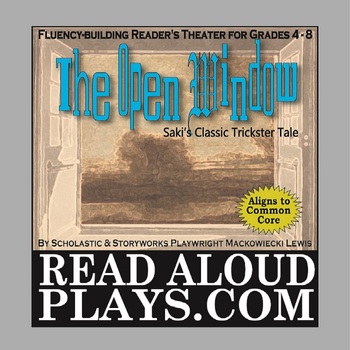Saki's The Open Window Reader's Theater Script
- PDF
- Easel Activity
What educators are saying
Description
The Open Window" by Saki (H.H. Munro) comes with the original text, three comprehension activities, and teacher notes. A great way to introduce students to the classics, or simply use it as a fun compare/contrast literature activity. It tells about a man named Framton Nuttel who comes to the countryside to recover from “a bad case of the nerves.” Too bad he meets young Vera Sappleton, a teenaged trickster, who sends Framton over the edge. It’s highly accessible for young readers because of its brevity, the way Saki sets up the victim, and because the lead character is a youngster.
The play was originally published in Read Aloud Plays: Classic Short Stories (Scholastic 2010). It includes parts for eight actors and one barking dog. Use it with grades 4 through 8 as reader’s theater, a radio drama/podcast, or full stage performance. A full class set plus performance rights included! The original purchaser is licensed to print one class set per year for use in his/her original classroom.






